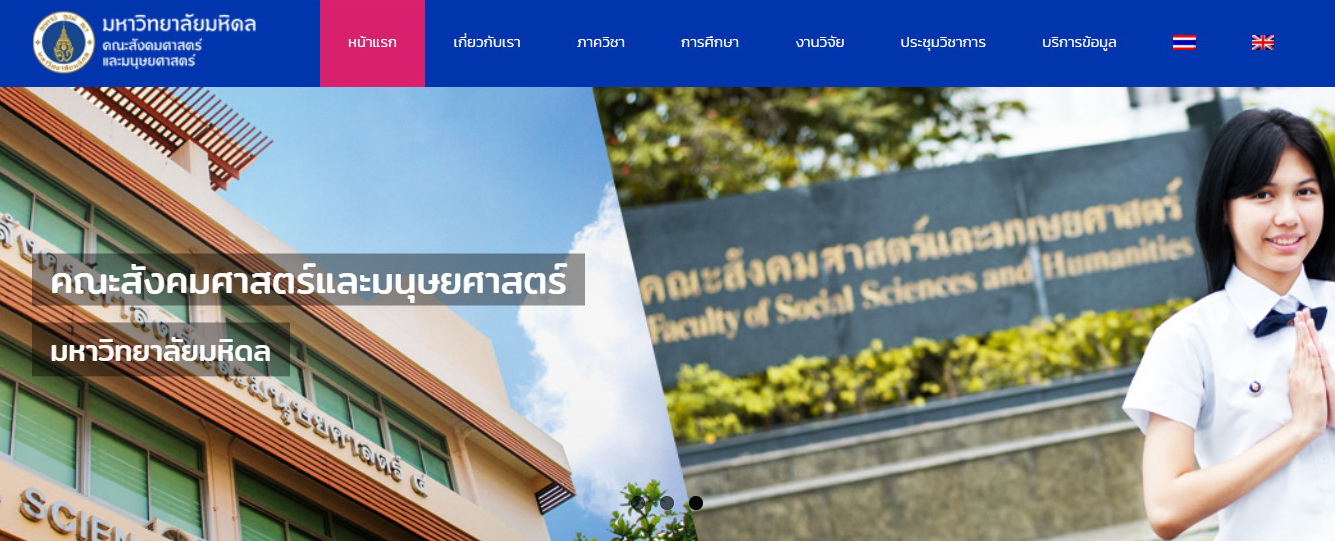รูปแบบการอภิบาลในการจัดการทรัพยากรป่าชายเลน
คำสำคัญ:
การอภิบาล, การจัดการ, ทรัพยากรป่าชายเลนบทคัดย่อ
ทฤษฎีการอภิบาล เป็นทฤษฎีที่อยู่ในกระบวนทัศน์รัฐประศาสนศาสตร์ในยุคปัจจุบันตามแนวคิดของนักวิชาการด้านรัฐประศาสนศาสตร์ โดยเฉพาะอย่างยิ่ง นิโคลัส เฮนรี่ ซึ่งนับเป็นทฤษฎีที่นำไปสู่ความเปลี่ยนแปลงครั้งสำคัญเกี่ยวกับมุมมองในการบริหารงานภาครัฐ จากเดิมที่เชื่อว่า ภาครัฐเป็นผู้กำกับ สั่งการ รวมศูนย์อำนาจในการบริหารเพียงลำพัง เปลี่ยนเป็นมีเครือข่าย สถาบันที่หลากหลายเข้ามามีบทบาทและส่วนร่วมมากขึ้น ทั้งภาครัฐ ภาคเอกชน ภาคประชาสังคม ชุมชน และประชาชน เรียกได้ว่า พลเมืองตื่นตัว ตื่นรู้ และลุกขึ้นมาจัดการตนเอง เพื่อร่วมกันแก้ไขปัญหาสังคม ซึ่งรวมถึงการจัดการทรัพยากรป่าชายเลนด้วย
ภายใต้บริบทของสภาพทรัพยากรป่าชายเลนและสภาพสังคมไทย สามารถวิเคราะห์และสังเคราะห์แนวคิดและทฤษฎีเกี่ยวกับการอภิบาลออกมาเป็นรูปแบบการอภิบาลในการจัดการทรัพยากรป่าชายเลน ครอบคลุม 3 ด้าน คือ ด้านการอนุรักษ์ทรัพยากรป่าชายเลน ด้านการฟื้นฟูทรัพยากรป่าชายเลน และด้านการใช้ประโยชน์ทรัพยากรป่าชายเลน ซึ่งประกอบด้วย 6 มิติ ได้แก่ 1) การอภิบาลแบบมีส่วนร่วม 2) การอภิบาลแบบเครือข่าย 3) การอภิบาลแบบชุมชน 4) การอภิบาลแบบจัดการตัวเอง 5) การอภิบาลแบบปรึกษาหารือ และ
6) การอภิบาลแบบปรับตัว
เอกสารอ้างอิง
ราชบัณฑิตยสถาน. (2554). พจนานุกรม ฉบับราชบัณฑิตยสถาน พ.ศ. 2554. กรุงเทพมหานคร: บริษัทศิริวัฒนาอินเตอร์พริ้นท์ จำกัด (มหาชน).
สมบูรณ์ ศิริประชัย. (2552). ธรรมาภิบาลภายใต้กระแสโลกาภิวัตน์: นัยต่อประเทศไทย. รัฐศาสตร์สาร มหาวิทยาลัยธรรมศาสตร์. 30(2) (พฤษภาคม - สิงหาคม), หน้า 1-112.
อัมพร ธำรงลักษณ์. (2553). “การบริหารปกครองสาธารณะ : การบริหารรัฐกิจในศตวรรษที่ 21.” ในการบริหารปกครองสาธารณะ: การบริหารรัฐกิจในศตวรรษที่ 21. หน้า 1-34. กรุงเทพมหานคร: โรงพิมพ์มหาวิทยาลัยธรรมศาสตร์.
Bekkers, V., Dijkstra, G., Edwards, A., and Fenger, M. (2007). Governance and the Democratic Deficit:Assessing the Democratic Legitimacy of Governance Practices. Hampshire: Ashgate Publishing Limited.
Emerson, K., Tina N., and Stephen, B. (2012). An Integrative Framework for Collaborative Governance. Public Administration Research Theory. 22(1), 1-29.
Hood, C. (1991). A Public Management for all Seasons?. Public Administration. 69 (Spring 1991), 3-19.
Levi-Faur, D. (2012). “From “Big Government” To “Big Governance”?” In Oxford Handbook of Governance, pp. 3-18. Levi-Faur, D., ed. New York: Oxford University Press.
Meuleman, L. (2008). Public Management and the Metagovernance of Hierachy Network and Markets:The Feasibility of Designing Style Combinations. A. Spring Company: Physicn-Verlag.
Rhodes, R.A.W. (1996). The New Governance : Governing without Government. Political Studies, XLIV, 652-667.
____ . (1997). Understanding Governance, Policy Networks, Governance, Reflexivity and Accountability. Berkshire: Open University Press.
Roiseland, A. (2011). Understanding Local Governance:Institutional Forms of Collaboration. Public Administration, 89(3), 879-893.
Rosenau, J., and Czempiel, E.O. (1992). Governance without government: order and change in world politics. Cambridge University Press.
Papadopoulos, Y. (2003). “Co-operative Forms of Governance: Problems of Democratic Accountability in Complex Environments.” European Journal of Political Research,
42, 473-501.
Peter, B. G. (1996). Future of Governing: Four Emerging Model. University Press of Kansas.
Weber, M. (2004). “Bureaucracy.” In Shafritz, Jay M. & Hyde, Albert C. Classics of Public Administration. Wadsworth: Cengage Learning.
ดาวน์โหลด
เผยแพร่แล้ว
รูปแบบการอ้างอิง
ฉบับ
ประเภทบทความ
สัญญาอนุญาต
สหศาสตร์: วารสารสังคมศาสตร์และมนุษยศาสตร์ ให้ความสำคัญกับการคุ้มครองลิขสิทธิ์และสิทธิของผู้นิพนธ์ในการเผยแพร่ผลงานวิชาการ โดยมีวัตถุประสงค์เพื่อส่งเสริมความโปร่งใส ความถูกต้องตามหลักวิชาการ และสอดคล้องกับแนวปฏิบัติสากล ทั้งนี้ วารสารกำหนดนโยบายดังต่อไปนี้
|
1. การยอมรับเงื่อนไขการเผยแพร่ - ผู้นิพนธ์ที่ส่งบทความเพื่อตีพิมพ์ ต้องปฏิบัติตามนโยบายและเงื่อนไขการเผยแพร่ของวารสารโดยเคร่งครัด - การส่งบทความถือเป็นการยอมรับให้นำบทความเข้าสู่กระบวนการพิจารณาและการเผยแพร่ตามมาตรฐานของวารสาร |
|
2. การโอนลิขสิทธิ์ - เมื่อบทความได้รับการตอบรับเพื่อตีพิมพ์ ผู้เขียนโอนลิขสิทธิ์ของบทความให้แก่วารสาร - วารสารมีสิทธิ์เผยแพร่ ทำซ้ำ และเผยแพร่บทความในทุกรูปแบบ ทั้งสิ่งพิมพ์ เว็บไซต์ และสื่อออนไลน์อื่น ๆ |
|
3. สิทธิ์ของผู้นิพนธ์หลังการโอนลิขสิทธิ์ - ผู้นิพนธ์ยังคงมีสิทธิ์ใช้บทความเพื่อวัตถุประสงค์ทางวิชาการ เช่น การสอน การวิจัยส่วนบุคคล การใช้ประกอบวิทยานิพนธ์ หรือการเผยแพร่ในแพลตฟอร์มที่ไม่ใช่เชิงพาณิชย์ - การนำบทความไปใช้เพื่อวัตถุประสงค์เชิงพาณิชย์ ต้องได้รับอนุญาตจากวารสารก่อนเป็นลายลักษณ์อักษร |
|
4. การเผยแพร่ภายใต้สัญญาอนุญาตสาธารณะ (Creative Commons License) - บทความทั้งหมดในวารสารจะเผยแพร่ภายใต้สัญญาอนุญาต Creative Commons Attribution-NonCommercial-NoDerivatives 4.0 International (CC BY-NC-ND 4.0) - บุคคลอื่นสามารถเผยแพร่หรือแบ่งปันบทความได้โดยต้องให้เครดิตแก่ผู้นิพนธ์ต้นฉบับ แต่ห้ามแก้ไข ดัดแปลง หรือใช้ในเชิงพาณิชย์ |
|
5. ความถูกต้องของเนื้อหาและการใช้สื่อจากบุคคลที่สาม - ผู้เขียนต้องรับรองว่าบทความที่ส่งเพื่อตีพิมพ์เป็นผลงานต้นฉบับของตนเอง ไม่ได้ส่งซ้ำซ้อน (duplicate submission) และไม่ละเมิดลิขสิทธิ์หรือคัดลอกผลงานของผู้อื่น รวมถึงไม่มีการปลอมแปลงข้อมูล การตีพิมพ์ซ้ำ หรือการกระทำใด ๆ ที่ขัดต่อหลักจริยธรรมทางวิชาการ - ผู้เขียนต้องรับผิดชอบในการขออนุญาตใช้สื่อจากบุคคลที่สาม เช่น ภาพ ตาราง หรือกราฟิก และต้องอ้างอิงหรือให้เครดิตอย่างถูกต้องน |
|
6. ข้อจำกัดความรับผิดชอบ (Disclaimer) - บทความที่ได้รับการตีพิมพ์ในวารสารสหศาสตร์: วารสารสังคมศาสตร์และมนุษยศาสตร์ถือเป็นลิขสิทธิ์ของวารสาร - ข้อความ ข้อมูล และข้อคิดเห็นที่ปรากฏในบทความเป็นความรับผิดชอบของผู้เขียนแต่ละท่านโดยตรง มิได้สะท้อนถึงทัศนะหรือจุดยืนของกองบรรณาธิการหรือหน่วยงานที่เกี่ยวข้อง - หากบทความมีข้อผิดพลาดหรือการละเมิดสิทธิ์ใด ๆ ความรับผิดชอบทั้งหมดเป็นของผู้เขียนแต่เพียงผู้เดียว - การนำบทความไปใช้ในเชิงพาณิชย์ ต้องได้รับอนุญาตเป็นลายลักษณ์อักษรจากบรรณาธิการวารสารก่อน ทั้งนี้ ผู้ขออนุญาตต้องจัดทำคำชี้แจงเกี่ยวกับวัตถุประสงค์และลักษณะการใช้งานอย่างชัดเจน การใช้บทความในเชิงพาณิชย์โดยไม่ได้รับอนุญาตถือเป็นความรับผิดชอบของผู้ใช้แต่เพียงผู้เดียว |




